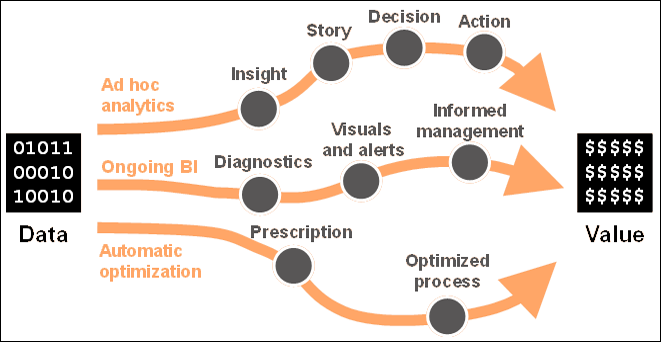Salesforce's evolving data ecosystem
Salesforce has been evolving its data management and analytics ecosystem at a blistering pace...

I came across a terrific visual in Andrea De Mauro's book Data Analytics Made Easy (Packt Publishing) which depicts the three principal ways by which analytics typically create tangible change for organizations—"data-to-value paths", as he calls them.
To summarize the three:
1) Ad hoc analytics: a problem is spotted, and an analyst is assigned to dive into the data to figure it out. If all goes well, the analyst comes back with an insight, which is repackaged into a compelling story, which guides a smart decision, which solves the problem. It doesn't always work this way, of course—but often it does.
2) Ongoing BI: less dramatic than the above scenario, day-to-day business intelligence can have significant longer-term impacts on an organization through its ability to present insightful data in a timely and repeated fashion (sometimes bolstered by alerts triggered by anomalies in the data), and thus to steadily improve the quality of decisions made by managers over time.
3) Automatic optimization: referring to processes and decisions driven by machine learning, this path offers the biggest potential value from capturing operational efficiencies and from the ability of such systems to continuously improve themselves. It also comes with a risk of pushback.
It's worth keeping these three paths in your head as you think about investments in analytics and AI, as they'll help to shift your focus from the technology itself to the business value it's supposed to be creating.


Salesforce has been evolving its data management and analytics ecosystem at a blistering pace...

Sometimes the most important revolutions are the quietest. While the value of "data" has certainly...

One of the most powerful and fundamental transformations at the heart of how LLMs operate is the...